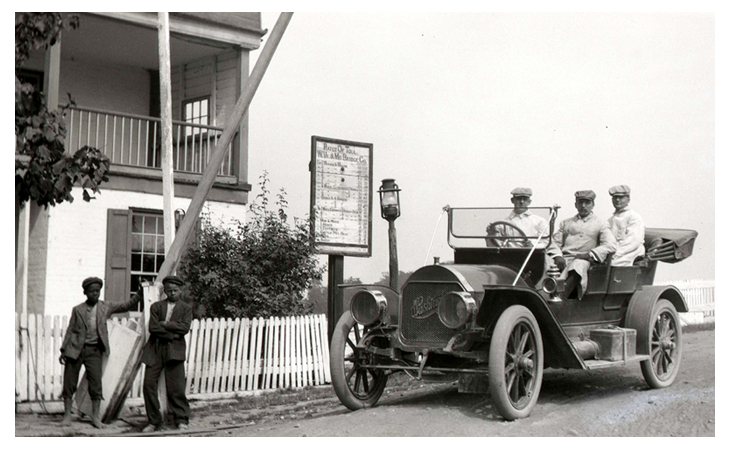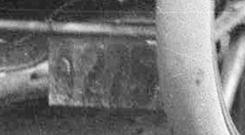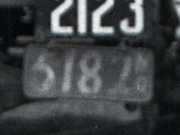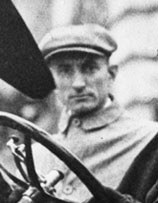 Howard S. Fisk was employed by the Evening Star newspaper in the District of Columbia for 66 years. He was hired as a copy boy at about age 15 on August 21, 1893, and retired on August 21, 1959 as a respected reporter after one of the longest journalism careers in United States history. His death came at home after a brief illness on December 20, 1961, at age 83. Howard S. Fisk was employed by the Evening Star newspaper in the District of Columbia for 66 years. He was hired as a copy boy at about age 15 on August 21, 1893, and retired on August 21, 1959 as a respected reporter after one of the longest journalism careers in United States history. His death came at home after a brief illness on December 20, 1961, at age 83.
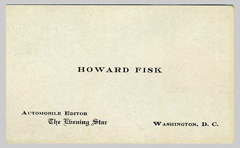 As a young man, when hired by the Evening Star, Mr. Fisk was an avid bicyclist. During the years that followed he participated in numerous organized cycling events including century (100-mile) races. He was active in the District of Columbia Division of the League of American Wheelmen, an organization devoted to cycling, and he helped to establish routes for cycling races and trips. This interest in a mode of transportation that was all the rage in the 1890s and 1900s led Mr. Fisk's employer to name him its first Automobile Editor in 1907. As a young man, when hired by the Evening Star, Mr. Fisk was an avid bicyclist. During the years that followed he participated in numerous organized cycling events including century (100-mile) races. He was active in the District of Columbia Division of the League of American Wheelmen, an organization devoted to cycling, and he helped to establish routes for cycling races and trips. This interest in a mode of transportation that was all the rage in the 1890s and 1900s led Mr. Fisk's employer to name him its first Automobile Editor in 1907.
Although the horseless carriage was by no means a reliable mode of everyday, year-round transportation at the time, it was slowly growing in popularity and prominence, and major newspapers around the country were establishing dedicated reporters and pages, especially in their Sunday editions, to news of the "automobilists." With the resources of one of Washington's most prominent news sources behind him, Mr. Fisk truly had a front row seat as the age of the automobile in the Nation's Capital, and the nation as a whole, unfolded before him. He came of age at precisely the right time to chronicle the development of what was arguably the most important technological advancement of the twentieth century, and chronicle it he did.
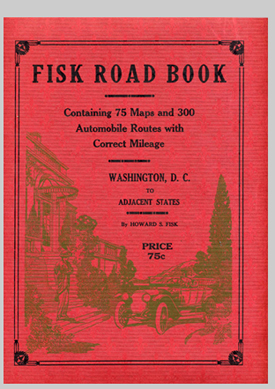 In a March 1952 interview conducted in conjunction with the Golden Jubilee of the American Automobile Association, Mr. Fisk explained that his role as the Star's automobile editor was "to boost the automotive industry and work for better roads through publicity, illustrated articles and road maps." He went on to describe some of the events that were held to help increase the popularity of automobiles: "There were durability, reliability, sociability and endurance runs; economy and inter-city runs to establish records; floral parades; business booster trips; and special endurance runs for motor trucks. Automobile experts and technicians participated and their reports were awaited with much interest by motor vehicle manufacturers. Through these tests, better automobiles and motor trucks were built." The photographs included in the galleries of this section of DCplates.com are just a sampling of those taken by Mr. Fisk during these and other events. In a March 1952 interview conducted in conjunction with the Golden Jubilee of the American Automobile Association, Mr. Fisk explained that his role as the Star's automobile editor was "to boost the automotive industry and work for better roads through publicity, illustrated articles and road maps." He went on to describe some of the events that were held to help increase the popularity of automobiles: "There were durability, reliability, sociability and endurance runs; economy and inter-city runs to establish records; floral parades; business booster trips; and special endurance runs for motor trucks. Automobile experts and technicians participated and their reports were awaited with much interest by motor vehicle manufacturers. Through these tests, better automobiles and motor trucks were built." The photographs included in the galleries of this section of DCplates.com are just a sampling of those taken by Mr. Fisk during these and other events.
In addition to his work for the Star, Howard Fisk published some of the earliest U.S. road maps and automobile routes in a 1914 volume aptly entitled the Fisk Road Book. The 70-page, 9 3/4 x 12 3/4" book contains maps and motor routes from the District of Columbia to adjacent states. Perhaps most interesting to peruse today are the numerous advertisements for vehicles, motoring accessories, and repair shops. Makes promoted in full-page advertisements placed by Washington automobile dealers include Studebaker, Cadillac, Paige, Maxwell, Franklin, Marmon, Westcott, Briscoe, Buick, and Pierce-Arrow. At a time at which a preferred method of power had not yet been identified (gasoline, steam, and electric were all still seen as viable choices), it is not surprising to see prominent ads placed by agents of electric cars such as Baker, Detroit, and Ohio.
text continued below
|
Date
Location
Photographer
Vehicle manufacturer
Year and model
Registration
|
Sept. 18, 1910
At a Potomac River toll bridge, believed to be that between
Sharpsburg, Md. and Shepherdstown, W.Va.
Howard S. Fisk
Carter Motor Car Corp.; Hyattsville, Md.
1909 or 1910 Washington 5-passenger tourer
1910 Maryland no. 4275 |
|
|
|
 |
|
A number of businesses that advertised in Fisk's Road Book were controlled by individuals featured repeatedly in his photographs. It was, of course, beneficial for vehicle agents (dealers) and individuals involved in vehicle-related trades and businesses to be in good stead with auto editors at the city's newspapers in order to promote their interests to the most advantageous extent possible. Although not an auto owner himself during this era, it is likely that vehicles were provided to Mr. Fisk on a regular basis for a variety of personal and business purposes.
Based upon information documented by Mr. Fisk about the composition of the 16 separate scenes included in the accompanying galleries we know that at least 11 of them have a direct connection to Mr. Edwin B. Terry, Mr. Abe Cohen, and Emerson & Orme Co., the latter being a vehicle manufacturer's agent.
Mr. Terry figures most prominently in our sampling of Mr. Fisk's work. Both avid bicyclists, it is likely they became acquainted and developed their friendship through their pursuit of this common interest. In business, Terry was the proprietor of the Columbia Transfer and Storage Company, of Washington, which advertised in the 1914 Fisk Road Book: "Move to Baltimore and Suburban Points by Large Motor Vans; Large and Small Horse-Drawn Padded Vans for City Work." Aside from trucks operated by his business he owned a number of passenger automobiles, and he traveled extensively with Mr. Fisk and other motorists, often with more than one of his vehicles on a single excusrion.
|
| Maryland homemade (i.e. pre-mid-1910) license plates used by Edwin B. Terry |
|
|
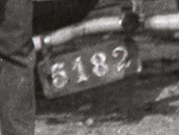
|
|
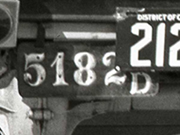
|
|
 |
April 4, 1909 |
Sept. 5, 1909 |
|
Oct. 17 , 1909 |
|
May 1, 1910 |
Buick coupe (white) |
(unknown make;
possibly Buick coupe) |
|
Buick coupe (dark) |
|
Washington touring car |
Edwin Terry appears to have made or procured a number of Maryland homemade license plates, which were required before the state provided uniform plates to vehicles owners in mid-1910, with the same number. Despite the existence of a Maryland law requiring that multiple vehicles owned by an individual be registered with different numbers and plates, Mr. Terry, who is believed to have resided in the District of Columbia but would have required Maryland and Virginia registrations in order that his vehicles could be used in those states, appears to have had only one Maryland registration that he used on several vehicles. It is instances such as this that compelled states to abandon the use of "lifetime" registrations evidenced by owner-provided plates in favor of annual, dated plates provided by the state.
Like Mr. Terry, the Emerson & Orme Co., located at 1407 H St., NW, appears to have also used a single Maryland license plate on various vehicles whenever the need to travel into that state arose. In its Fisk Road Book advertisement the company promoted its affiliation with Detroit Electric vehicles, although a later photo of one of the company's owners operating a Woods car, also powered by batteries, suggests that the agency handled at least the two alternative-power vehicle lines, and perhaps other makes.
The sight of license plates of multiple jurisdictions on a single car was commonplace in Washington prior to the establishment of registration reciprocity with Maryland and Virginia in the 1920s. Today this is never seen, but in the District of Columbia during the years of the Fisk photos it was, in fact, unusual to not see at least a Maryland plate on a vehicle based within the District of Columbia. Registration laws were apparently strictly enforced, at least with respect to the display of a plate of a particular jurisdiction in which one was operating his or her vehicle, so motorists routinely displayed, or at least carried with them, plates of whatever place they thought they might find themselves during their travels in the region. Whether particular non-D.C. plates (such as Md. marker no. 5182) used by Washingtonians were properly assigned and authorized is, of course, another matter.

Howard Fisk (left) participating in a rally sponsored by the Retail Merchants Association
The photographs taken by Howard Fisk from 1909 through 1916 that have been carefully preserved, a small sample of which are reproduced in galleries on the following pages, are an important part of his legacy. In the late 1980s his daughter read an article in the Washington Post about the presidential inaugural license plate collection of Charles Gauthier, a recognized expert on the subject and long-time member of the Automobile License Plate Collectors Association who has made significant contributions to DCplates.net. She contacted him and they became friends, primarily because they were both natives of the District of Columbia who shared an interest in its history.
Years after their first contact, Mr. Fisk's daughter gave to Mr. Gauthier a rather large box, telling him that it had belonged to her father and asking him to assure that its contents were preserved because, she believed, they were important to history. Indicating the importance of finding a worthy caretaker for the materials, the nature of which she did not divulge, she asked him simply to open the box in the privacy of his home. Later that day, as he followed her instructions, Mr. Gauthier was amazed to find within the box a plethora of photographs, negatives, articles, journals, maps, and related items related to the early days of automobiles and motor vehicle travel in the District of Columbia and surrounding area.
Howard Fisk's personal collection of memorabilia from his professional life, and photographs of family members that also have been preserved, comprise a truly amazing chronicle of the times in which he lived and worked. Mr. Gauthier hopes to someday publish much of the material in order that it may be seen and enjoyed by the public. In the meantime, he has graciously allowed DCplates.net to present some of the images in the accompanying galleries. We are indebted to Mr. Gauthier for granting to us his permission to publish these wonderful images, and are grateful for his care and time spent in their selection and preparation as well as in compiling information from Mr. Fisk's journals to accompany the images. All of the images and corresponding information in the Howard S. Fisk galleries are protected by copyright and may not be copied, printed, or otherwise used or reproduced without the expressed written permission of Charles Gauthier.
|
|






